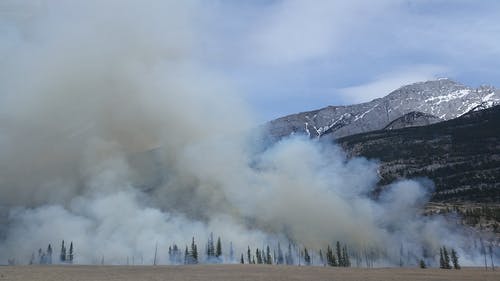This summer’s unseasonably early wildfires have transformed the air quality in many parts of British Columbia from clear to hazy and smoky. Visibility has become so poor that it has obliterating the spectacular scenery for which the province is known.
Officials are now warning that the blanket of smoke from these fires is creeping towards the Lower Mainland, which until now has been mostly spared.
What are the dangers to our health of inhaling this smoke and how can we best protect ourselves?
Dr. Don Sin, Director of the Centre for Heart Lung Innovation (HLI) at St. Paul’s Hospital, explains why inhaling this smoke can be so hazardous, who’s at the greatest risk, and what we can do to mitigate its effects on our well-being.

Q: What are the health risks of inhaling wildfire smoke?
A: There is the immediate danger of heart attacks, strokes, asthma and chronic obstructive pulmonary disease (COPD) conditions worsening, and hospitalizations for susceptible individuals when they are exposed to significant amounts of polluted air. There are also longer-term health implications of inhaling polluted air, which include hypertension, atherosclerosis, heart failure, COPD and even lung cancer.
Q: Apart from the lungs, what other organs are at risk of wildfire smoke?
A: The greatest immediate risk is to blood vessels, the brain and the heart. Small particles in polluted air can cause inflammation and blockage in these organs, leading to heart attacks, stroke and even sudden deaths. Some people also develop generalized fatigue and malaise, while others develop headaches, “foggy thinking”, sinusitis, joint pain and eye irritation.
Q: Who is at greatest risk and why?
A: The very young and the elderly are the most vulnerable because their immune system cannot deal with all the harmful effects of polluted air. Expectant mothers are also at increased risk as they tend to hyperventilate, especially in the later semesters. Those with underlying heart and lung conditions such as asthma, COPD and heart disease are also at increased risk.
Q: What are the specific toxic components that make smoke so dangerous and so difficult for human lungs to handle?
A: The gas (or smoke) in the smoke causes the initial irritation and inflammation in eyes, lungs and nose. However, the most harmful effects are likely caused by small particles (usually less than 2.5 microns in diameter) contained in polluted air that people can breathe because they can penetrate into the deeper parts of the lung and even into the blood vessels. These cause short-term as well as long-term inflammation and oxidant stress.
The body handles inhalation of polluted air through inflammation. It is a protective mechanism and without it, we would become seriously ill immediately after exposures. However, too much of a “good thing” can cause harm and in certain individuals the inflammation gets a little too “hot” and causes (collateral) damage to host organs.
Q: How can people keep safe from the smoke during these wildfires?
A: When air quality is poor, people, especially those more susceptible to its harmful effects, should stay indoors (with windows closed) and turn on an air purifier or air conditioner if they have one. If they have to go outside, they should wear a mask, preferably an N95 mask. People should not engage in any strenuous exercise like jogging or cycling when air quality is poor. Many air purifiers and air conditioners also contain N95 filters, which help in reducing particle exposure.
Q: How small can particulate be to cause human harm?
A: Particles less than 2.5 microns in diameter are thought to be most dangerous to human health because they can bypass the nose and upper airway filtration system and get into deeper parts of the lung and into blood vessels.
Q: If we’re far from wildfires but the air around us is hazy, are we at risk?
A: It is hard to say. It depends on the size of the wildfire, how long it has been burning for, and the wind patterns. Check the air quality websites (below) daily to obtain local information.
Q: When should we seek medical attention?
A: Certainly when individuals get symptoms, especially shortness of breath at rest or with only mild exertion. Patients who have been prescribed inhalers should take them regularly. If there are concerns, the public should seek medical advice.
For more information on air quality where you live, visit:
BreezoMeter and AQICN .





